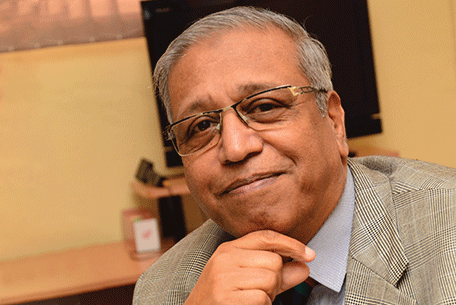Emergency Tel: 211 5157



Health Services In Mauritius- 55 Years Since Independence
The provision of health care in any country is under the umbrella of multiple institutional facilities, the staff of different types, medical and paramedical, the availability of drugs and medicine, more so whether these services are accessible to the common man. Health facilities in Mauritius have always been provided by both the public and private sector.
PRE-INDEPENDENCE PERIOD
Before 1968, when Mauritius was a colonized island, sailors and soldiers were regular visiting and serving in the country, thus bringing with them many of the infectious diseases. Unhygienic conditions prevailing in the country, with lack of potable water and disposal of waste materials worsened the state of affairs. Infectious conditions, like gastro-enteritis, tuberculosis smallpox, scabies, cholera, leprosy including malaria were rampant in the country. All these conditions needed to be tackled, and the post independence government were well aware of that, and all these conditions needed to be tackled.
At the end of 1967, there were two regional hospitals, the Civil Hospital in Port- Louis being the oldest, and Victoria Hospital in Plaines Wilhems, and six district hospitals. There were three specialized hospitals, namely a psychiatric hospital in Beau Bassin, a leprosy hospital in Pamplemousses and a tuberculosis hospital in Poudre d’Or. There were five private clinics in Plaines Wilhems and Moka. There were twenty four hospitals on sugar estates for minor ailments of their employees and members of their families.
IMMEDIATE POST-INDEPENDENCE PERIOD
In August 1969, the Sir Seewoosagur Ramgoolam National Hospital was inaugurated to provide only out-patient services. It started admitting in-patients in November 1969. With this addition, the number of beds in the three regional hospitals had reached 1,216. Later, The Tuberculosis wards in Civil and Victoria hospitals were closed down. Between 1967 and 1990, the number of beds in the three regional hospitals increased to 1,554. In November 1969,the Poudre d’Or district hospital was closed down, and all their patients transferred to SSRN Hospital. IN 1972, Moka hospital was converted into an Ophthalmic Hospital. The Poudre d’Or hospital was converted into a chest hospital, and catered for patients with chest diseases. In 1976, the HMS Hospital situated at Vacoas was converted into an Ear, Nose and Throat Hospital. Between 1967 and 1970,two new private clinics opened their doors in Port Louis and Plaines Wilhems. In 1977, there were only 18 sugar estates hospitals left, and by 1990, there were only 2 left who were admitting patients.
In 1967, there were 27 maternal and child health clinics. Family planning services were integrated in the Ministry of Health and in 1973, there were53 clinics offering these services, to reach 95 clinics in 1983, and 137 in 1990.
All regional, district and specialized hospitals had out-patient and in-patient services. Facilities for out-patients also existed in Area Health centres, community health centres, dental clinics and a few other institutions
At the end of 1967,there were165 doctors in Mauritius, a few Specialists, reaching 233 in 1975 and 503 by 1980. At 1969,there were 22 dentists, doubling up in 1975, and by 1990,there were 132 dentists.
As far as nurses and midwives, in 1969, there were 882 in the public service. By 1990, their number increased to 2,768.
THE LAST THIRTY YEARS
The pattern of the diseases have undergone major changes, as well as the epidemiology. The Communicable diseases have given way to a variety of Non-Communicable diseases. With various actions taken by the Ministry of Health and the Government, many of the infectious diseases were brought under control. Leprosy cases are non-existent, tuberculous cases are limited to a few, smallpox has been eradicated, scabies are rarely seen, and malaria has disappeared except for a few sporadic cases. Recently, the Covid-19 pandemic has been tackled well. The availability of vaccines in the control of the infectious diseases have been very important.
The Non-Communicable diseases have been on the increase, more so with a change in the way of living, with economic growth, an increasing facility of available fast food, sedentary life with lack of exercises, alcohol consumption. The number of cases in Hypertension and Diabetes are on the rise, bringing with them all sorts of complications, namely renal diseases requiring dialysis. Cancer is on the rise and are diagnosed earlier, bringing the patients earlier for treatment and better results. The Ministry are increasing available facilities for the cancerous drugs, radiotherapy and chemotherapy. Cardiac operations are being done faster, in addition of Angiography and stenting in the regional hospitals.
The number of regional hospitals have increased from three to five, with the addition of Jawaharlal Nehru Hospital at Rose Belle, and Bruno Cheong Hospital in Flacq. There are six specialized hospitals and two district hospitals.
The number of private clinics have increased from five to eighteen at present with almost 800 beds. The types of services have also undergone changes from specialized to superspecialised management. There is also a private cancer hospital that has opened its doors.
The trend in the public sector has also transformed itself, by offering superspecialised services in addition to its specialized services. Specialised cardiac surgery, paediatric surgery, endoscopies and endoscopic interventions, intensive medical and surgical units, NICU, advanced cancer diagnosis and management, neurosurgery and so many others are examples of same. A lot has also been achieved for drug addicts.
Gathering statistics for all these years , though available, will be very tedious for the reader to assimilate and understand, and may even lead to confusion. I have simplified those statistics to give an overview of some changes.
|
|
|
1967 UNITS |
1967 BEDS |
1990 UNITS |
1990 BEDS |
2022 UNITS |
2022 BEDS |
|
1 |
REGIONAL HOSPITALS |
2 |
987 |
3 |
1554 |
5 |
- |
|
2 |
DISTRICT HOSPITALS |
6 |
621 |
4 |
318 |
2 |
=3,781 |
|
3 |
SPECIALISED HOSPITALS |
3 |
889 |
4 |
1,032 |
6 |
- |
|
4 |
SERVICE POINTS COMMON DISEASES |
43 |
--- |
127 |
--- |
140 |
--- |
|
5 |
SERVICE POINTS MATERNAL/CHILD |
27 |
--- |
137 |
--- |
145 |
--- |
|
6 |
SERVICE POINTS FAMILY PLANNING |
--- |
--- |
160 |
--- |
148 |
--- |
|
7 |
DENTAL CLINICS |
5 |
--- |
22 |
--- |
58 |
--- |
|
8 |
PRIVATE CLINICS |
5 |
137 |
8 |
215 |
18 |
776 |
|
9 |
SUGAR ESTATE HOSPITALS |
24 |
478 |
2 |
22 |
0 |
--- |
|
10 |
SUGAR ESTATE DISPENSARY |
24 |
--- |
24 |
--- |
9 |
--- |
This has been an attempt of giving a summary of the changes in health care delivery in the last fifty five years. I have not dealt much for the multiple memoranda signed between the private clinics and the Ministry of Health in the last four years, including covid-19 pandemic. All this will amount to writing a book.
Dr Dawood Oaris, O.S.K.
President, Private Clinics Association,
Professor Emeritus, HOD ENT Department.
Featured Article
Contact Us
-

4, Labourdonnais Street,
Port-Louis -

(230) 211 5157
(230) 211 5181
(230) 211 7559 -

(230) 211 4647
Follow Chisty Shifa Clinic
Patients
Publications
Terms & Conditions | Privacy Policy | COPYRIGHT © 2022 Chisty Shifa.
All rights reserved. Powered by Nova Interaction










